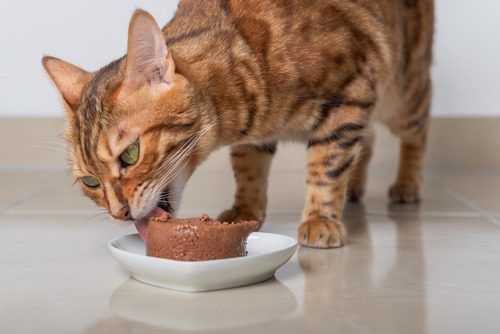Is Tuna Good for Cats?

If you’re a cat owner, chances are you’ve pondered whether it’s okay to share your tuna sandwich with your cat or if a can of tuna makes a good treat. It’s a common question we hear at Bulverde Animal Hospital, and it’s definitely worth exploring. In this blog, we’ll dive into the topic of feeding tuna to cats, what you need to know about it, and how it affects their health. Our aim is to help you make informed decisions about your cat’s diet. If you have more specific questions or concerns, we’re just a phone call away at (830) 438-7200.
The Nutritional Impact of Tuna on Cats
The Pros of Tuna
Tuna can be a source of high-quality protein for cats, which is essential for their muscle development and maintenance. It also contains omega-3 fatty acids, which can help keep your cat’s coat shiny and support their cardiovascular health. However, the benefits largely depend on how the tuna is prepared and how often it’s fed.
The Cons of Tuna
While tuna might seem like a tasty treat for cats, it’s important to be aware of the downsides. Tuna lacks certain nutrients that cats require for a balanced diet, such as vitamin E, which can lead to health issues if they consume too much. Additionally, some tuna can be high in mercury, a toxic metal that can cause health problems in cats over time.
Understanding the Risks of Mercury in Tuna
Mercury exposure is a significant concern when feeding tuna to cats regularly. High levels of mercury can lead to mercury poisoning, which affects the nervous system and kidneys. Symptoms might not be immediate but can develop over time with continuous exposure.
How to Safely Include Tuna in Your Cat’s Diet
- As a Treat, Not a Meal: The best way to include tuna in your cat’s diet is by using it as an occasional treat. This ensures that your cat enjoys the benefits of tuna without facing the risks of nutrient deficiencies or mercury exposure.
- Choosing the Right Type of Tuna: When selecting tuna for your cat, opt for varieties that are lower in mercury, such as light tuna, and ensure it’s in water, not oil or brine. Also, check that it doesn’t contain any added salt or spices.
Alternatives to Tuna for Cats
If you’re looking for safer alternatives to tuna that your cat might enjoy, consider specially formulated cat foods that mimic the flavor of tuna but are balanced to meet all of their nutritional needs. These alternatives are designed to be both delicious and healthy for your cat.
How Bulverde Animal Hospital Can Help
Feeding your cat tuna can be a nice treat, but it’s essential to do so in moderation and be mindful of the potential risks. By understanding the nutritional impact of tuna, the risks of mercury exposure, and the importance of maintaining a balanced diet, you can help ensure your cat stays healthy and happy. If you’ve been feeding your cat tuna and are concerned about their health, it’s best to consult with a vet. They can provide advice tailored to your cat’s specific needs and health status.
Remember, at Bulverde Animal Hospital, we’re here to help. Feel free to reach out to us at (830) 438-7200 for guidance and support. Our team is always here to support you and your cat with expert advice and care.
Recent Posts
About Us
At Bulverde Animal Hospital, our ultimate goals are excellent service to clients, personal growth, and the professional development of our staff. We are a small clinic creating a significant impact on pets' lives.
